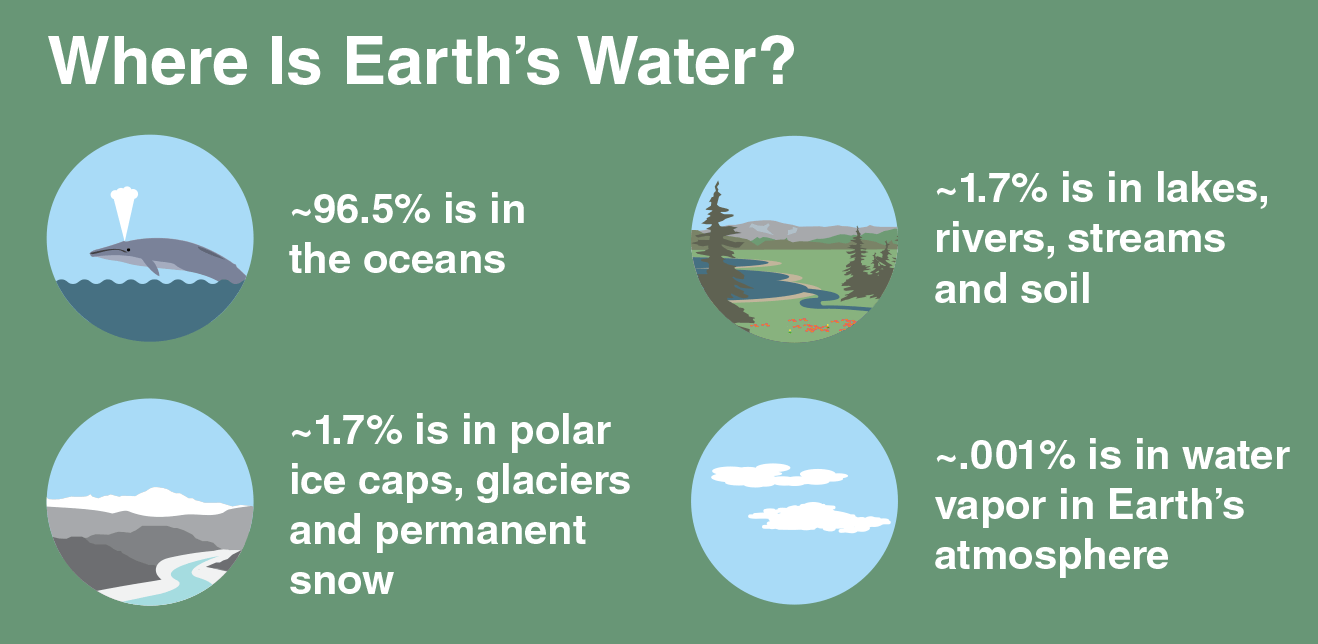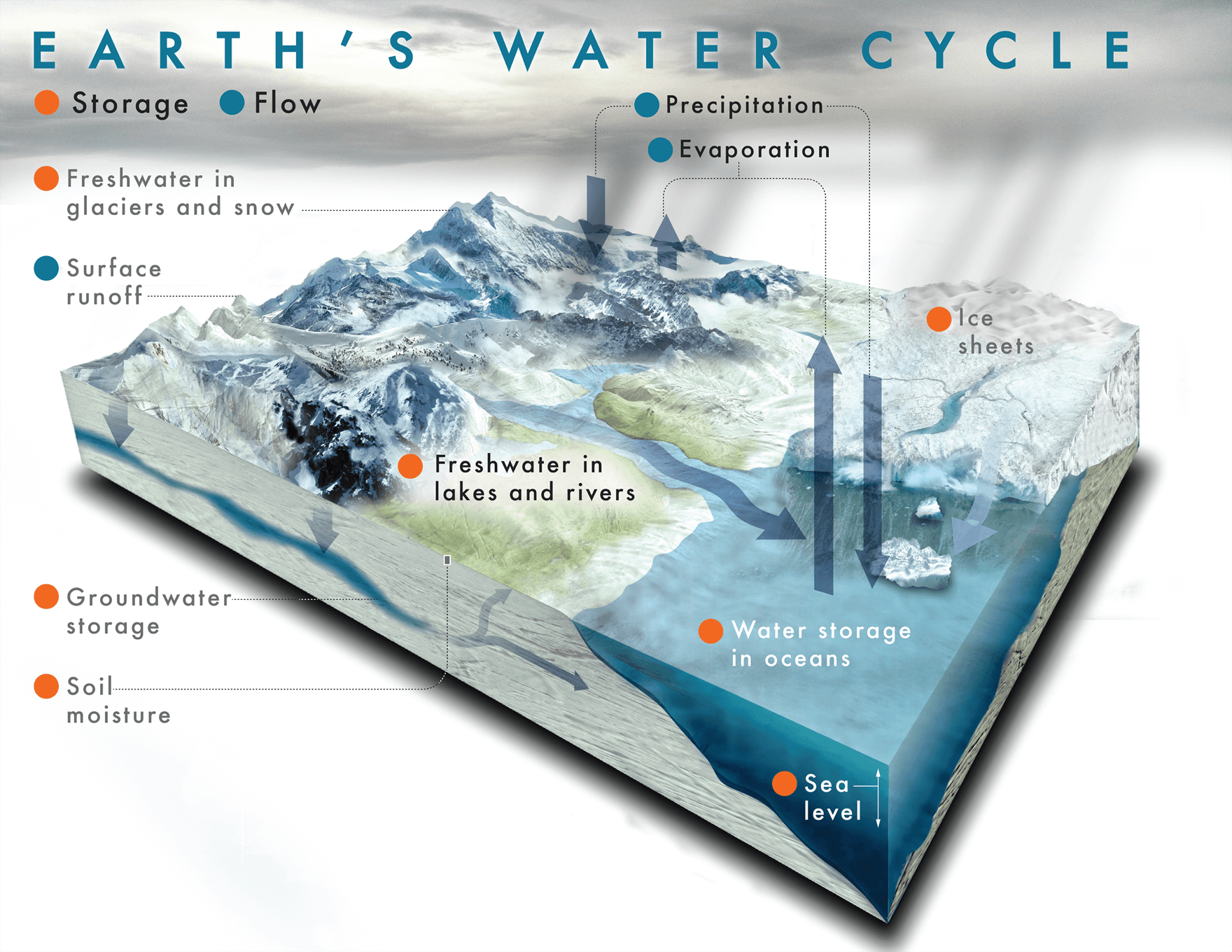AIM: TO LOOK AT THE WATER CYCLE AND HOW CLIMATE CHANGE IS AFFECTING IT.
Definition:

Scientific words:
- Evaporation. When water is heated by radiant energy it turns into water vapor.
- Transpiration. Evaporation from plants.
- Condensation. When water vapor cools, molecules join together and form clouds.
- Precipitation. When clouds get heavy the waters falls as rain, sleet, hail, or snow.
- Acidification: the action or process of making or becoming acidic.
We will be conducting an experiment that looks at the different ways that climate change is affecting the water cycle.


THE WATER CYCLE EXPERIMENT
Bag 1: Normal Water cycle
Bag 2: Water cycle with CO2 added: like Oceans in climate change
Bag 3: Water cycle with ice added: like Antarctica in climate change
Material:
- water\soda water
- bag
- food coloring
- litmus paper
- maker
- sand
Steps:
- get the maker and bag from teacher.
- draw the water cycle.
- one cup of water and put it in the bag.
- put two drops if you food coloring in the bag.
- hag the bag up on the window.
- bag two add litmus paper.
Two Images:
Findings:
The Water Cycle: Bag 1
|
CO2 Water Cycle: Bag 2
Acid
|
Desert Water Cycle
Bag 3
| |
Does it cycle?
| yes | yes | yes |
Amount of Water
| two | two | two |
Acidity
| one | three | onem |
Key: Water and acidity amount: 1 = none
2 = small
3 = large
Other comments:
1.bag one cycled.
2.bag on had a small amount of water.
3.bag one had none acidity..
4.bag two cycled.
5.bag two had a small amount of water.
6.bag two had large amount of acdity.
7.bag three cycled.
8.bag three had an small amount of water.
9.bag three had no acidity.
Conclusion:
bag one had cycled and had not much water and it had no acidity.bag two had cycled too and it had an small amount of water and it had a lager amount of acidity.bag three had cycled to it had an small amount of water it had no acidity.
Draw a labelled diagram of the Water Cycle
Water cycle words:
- Precipitation
- Hurricanes
- Acid rain
- Evaporation
- Carbon Dioxide
- Water
- Defirestation
- Water vapour
- Transpiration
- Flooding

TODAY YOU WILL BE INVESTIGATING THE EFFECTS THAT CLIMATE CHANGE HAS ON THE WATER CYCLE.
- Using your SOLO hexagons poster write a paragraph about the different aspects of climate change.
- Write about the following Climate Change concepts:
You can do these by powerpoint, embedding a movie , on your blog, on a doc or any other form of presentation. It is up to you.
ACIDIFICATION: HOW DOES CLIMATE CHANGE CONTRIBUTE TO THE ACIDIFICATION OF OUR OCEANS?
Picture:
Diagram of how it affects the water cycle.
DEFORESTATION: HOW DOES DEFORESTATION AFFECT CLIMATE CHANGE?
Picture:
Diagram of how it affects the water cycle.
ICE CAP MELT: HOW DOES ICE CAP MELT AFFECT CLIMATE CHANGE?
Picture:
Diagram of how it affects the water cycle.
WATER VAPOUR: HOW DOES CLIMATE CHANGE CONTRIBUTE TO WATER VAPOUR AND EVAPORATION?
Picture:
Diagram of how it affects the water cycle.
WEDNESDAY, JULY 3, 2019
Hurumanu - Recycling
Aim: To learn practical ways of recycling so that we can make our world a better place.
How can we prevent climate change though recycling these products?
Plastics:
Cycling or walking:
Paper:
Steel:
What is Zero Waste?
What can we do on the planet?

Plastics:
Cycling or walking:
Paper:
Steel:
Video questions:
What is Zero Waste?
What can we do on the planet?
What do we need to recycle?
What does recycling do?
How much of our rubbish is food scraps?
What does soil do to carbon dioxide in the atmosphere?
What do we need to do?
- Make P_________s.
- Have Zero ___________
What is a carbon footprint?
How can you make your Carbon Footprint smaller?
EXPERIMENT
Decomposing Landfill
Purpose: To understand how trash decomposes and to understand the importance of the 3 R's: recycle, reduce, and reuse.
- Bottle with top cut off
- Soil
- Various trash objects
- Water
- Spoon or small spade
- Newspaper
Procedure
Findings:
Conclusion:
Questions to answer in your conclusion.
- Which items biodegraded or decomposed the most?
- Why?
- If you were to continue your landfill, how long would it take for all items to biodegrade or decompose?
- Why would it be important to reduce the amount of trash in a landfill?
Energy Saving tips film
Name some of the tips.
INVESTIGATION:
At what rates do different items decompose?

Choose 5 items from the list and investigate them.
How long do they take to decompose?
What are they made from?
How will recycling this object help prevent climate change?
No comments:
Post a Comment
To support my learning I ask you to comment as follows:
1. Something positive - something you like about what I have shared.
2. Thoughtful - A sentence to let us know you actually read/watched or listened to what I had to say
3. Something thoughtful - how have you connected with my learning? Give me some ideas for next time or ask me a question.